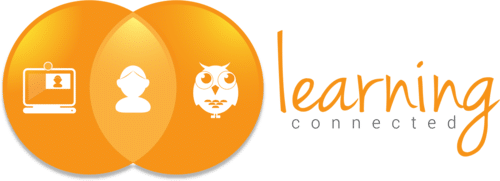As a teacher, you may be familiar with "flipping the classroom": flipping the traditional way of teaching. Students go through explanations at home and work during class on tasks that require critical thinking and are often given precisely as homework. Did you know that this method is also ideally suited for online education? In this blog, we'll tell you about the benefits of flipping the online classroom and how you can apply it in your own classes.
What is flipping the classroom?
Flipping the classroom is a form of blended learning based on the taxonomy of Bloom. This looks like this. The instruction a teacher normally gives during class is now given to students in advance, often through videos. This gives students a chance to absorb, understand and memorize the material at their own pace - these are the lower Bloom's thinking skills. The class time is then used for higher thinking skills, such as problem-solving and creative thinking, that students practice through interaction with each other and with help from the instructor present.
Why flipping the online classroom?
This method is very applicable in online education: especially in online classes, as a teacher you don't want to be talking all the time. With shorter concentration spans and distractions a mouse click away, it can be difficult to create engagement among students - so it's important to activate your class and get them working! During the online class, students can work together on the material they have worked through on their own time, with you as the instructor able to support them if they run into problems applying higher thinking skills.
Preparing materials
If you want to start flipped classroom, it is essential to have the right materials that students can use to prepare for class. These can be videos from YouTube or educational platforms, but you can also make your own videos. This is not difficult! All you need is a camera or program that allows you to record yourself or your computer screen. This way you can make the instructions visual and possibly show how it's done right away. You can then post the video online (for free) and share it with your students or upload it in your own learning environment.
Online group work
How do you get students to work in groups in the online classroom? In most video calling programs, you can easily break participants up into partial sessions or breakout rooms - read how to do that here in Webex, MS Teams and Zoom. With online group work, there are a few things important to keep in mind:
- Clear instructions are essential. Online, as a teacher, it is less easy to walk around and monitor whether everyone has understood the assignment and can get started.
- To work together in partial sessions, one student in each group must share his or her screen. So be sure to explain in advance how that works. You can also decide in advance which student gets that task - for example, the student whose name comes first in the alphabet - so they can get started right away.
- Make sure students know how to contact you if they have questions. Does your video calling program have a button they can use to signal you, like the "ask for help" option in Webex? Can they send you a chat message? Or can they return to the main room?
- Give your students an assignment they can do something with: one they can work on together, that has a concrete outcome and is SMART-formulated. So not "what are the differences between X and X?" but "describe the 5 differences between X and X.
- There are many online tools available that allow students to collaborate, such as Google Docs, Mural, Miro and Google Jamboard. Take a look!
- Don't limit interaction only to group work: learn how to use your online classroom tools, such as chat and survey, to get students thinking.
Challenges of the online flipped classroom
What challenges should you consider when implementing flipping the classroom in your own classes?
- When technology doesn't cooperate, interaction becomes difficult! Students without a working microphone cannot communicate and collaborate; students without a working camera may be more likely to be left out in group work; and students who participate via a phone or tablet have limited access to interactive features. Send everyone a checklist of supplies ahead of time, and see if support can be offered to students who cannot purchase the appropriate items.
- The prerequisite for a successful (online or offline) flipped classroom is that students come to class prepared. Students who have not done their homework will not be able to keep up with the lesson, which is discouraging and promotes inequality. Motivate your students by creating a ticket to class: for example, a minimum number of correct answers in a quiz on the learning platform. Are there still students who come unprepared? Consider an alternative assignment or ask other students to help them.
- For the benefits of flipping the classroom to be realized, it is obviously important that all students are on board and know what to do. In the online classroom, contact with students is less direct - so ask appropriate questions regularly to check understanding. You can quickly and easily get an overview of all students by using surveys, the chat function or responses.
'Flip' your online classes!
People learn best through interaction with others and active engagement with a topic. Flipping the classroom can help students get more out of your lessons. Haven't tried this method yet? Give it a shot! Want to learn more first? Learning Connected provides training on flipping the online classroom and activating students in the online classroom. View our training offerings here.




